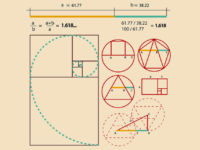Since the dawn of humankind, people have looked to the stars for explanations of life on Earth, each vastly different culture drawing vastly different stories from the sky. But what if one story about a constellation, the Pleiades, came from the very first human civilization? What if it is the oldest human told myth?
The Pleiades is a grouping of ten stars, situated next to the famous Orion constellation and visible from anywhere on Earth at some time of the year. Scientifically, the stars are categorized as an open stellar cluster of hot, blue, young stars that were only formed 115 to 125 million years ago. Although there are ten stars considered to be in the cluster, if an average person were to look at the sky, they would only see six or seven. The other three are lost because they are too dim or, from Earth’s viewpoint, have merged with their neighbors. In descending brightness, these seven stars’ names are: Alcyone, Merope, Electra, Maia, Taygeta, Atlas, and Pleione.
If you speak Greek (or read Percy Jackson) you know these names are female, with the exception of Atlas, and from Greek mythology. Atlas was a titan tasked with holding up the sky for eternity and, as a result, could not protect his seven daughters, each of which more beautiful than the last. Zeus, the god of sky and thunder, took pity on Atlas and his daughters. To protect them from being raped by Orion, the hunter, Zeus turned them into stars. Unfortunately, Orion is also a constellation and still pursues the girls to this day, chasing them across the night sky.
In descending brightness, these seven stars’ names are: Alcyone, Merope, Electra, Maia, Taygeta, Atlas, and Pleione.
There are hundreds of Greek myths about hundreds of constellations. Unlike others, this particular story is echoed all over the world. A Hindu myth says that the stars are seven sisters and wives to seven men. The fire god Agni fell in love with the wives and begged them to leave their husbands for him. Though the women refused, another god disguised herself as the wives and slept with Agni. Thinking their wives were unfaithful, the husbands divorced them, throwing them into the sky to become stars. Similar to the Greek myth, Agni continues to chase after them in star form.
The Kiowa and Lakota culture from North America has a slight variation on the sister theme. It’s said that seven girls were traveling through bear territory and were attacked. They fled to a high rock and prayed to the Great Spirit to save them. The Spirit raised the rock under their feet towards the sky, creating the unique rock formation known today as Devil’s Tower. The girls eventually jumped into the sky and became stars, always running from danger.
A story similar to that of the Kiowa and Lakota culture comes from the Aboriginal culture of mainland Australia. This group believed that seven sisters were fleeing a hunter or pursuant who was trying to rape them. The sisters took to the sky to escape, but the hunter followed them in the form of the Orion constellation who continued to chase them across the sky.
One hypothesis, by Ray and Barnaby Norris, explains these surprising similarities: the two stories are really just one. They use the evidence that both the Greek and Aboriginal stories are about seven siblings, and are even called “Seven Sisters” in the respective cultures. Both stories tell that the women are chased from Earth by a grand hunter attempting to rape them. Both stories are about the same two constellations in the sky.
Norris speculates that, if the two myths are the same, then this myth is the oldest of all humankind. The last time Aboriginal ancestors and Greek ancestors would’ve lived in the same culture was 100,000 B.C. in the fertile crescent. Since that time, the two groups have been completely separate, most notably by Aboriginals migrating to Australia around 50,000 B.C.
Could a simple story about sisters stay in the collective consciousness for that long? It is very likely that this myth is so prevalent because cultures since the beginning of humankind have held to the strict gender roles outlined in “Seven Sisters.” The male hunter and the female runner outline how Greek and Aboriginal groups view gender.
Norris speculates that, if the two myths are the same, then this myth is the oldest of all humankind.
Whether or not you believe the “Seven Sisters” is the oldest myth of humanity, the Pleiades prove that humans on all continents are entranced by the beautiful crossing of constellations.




